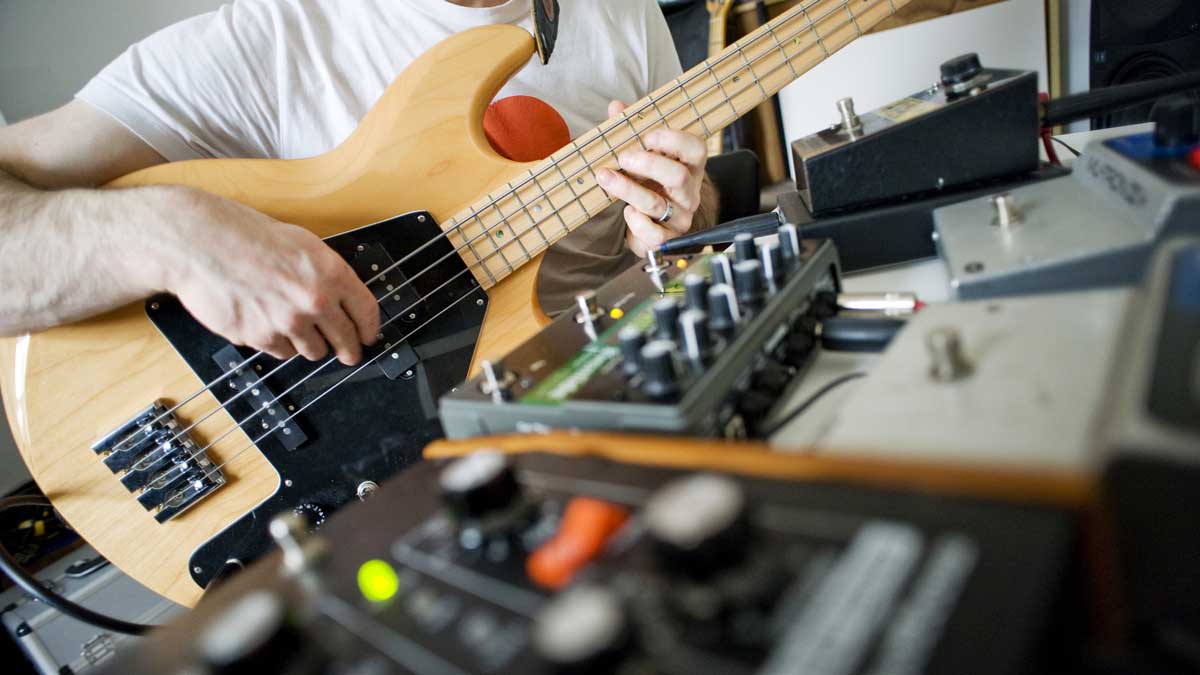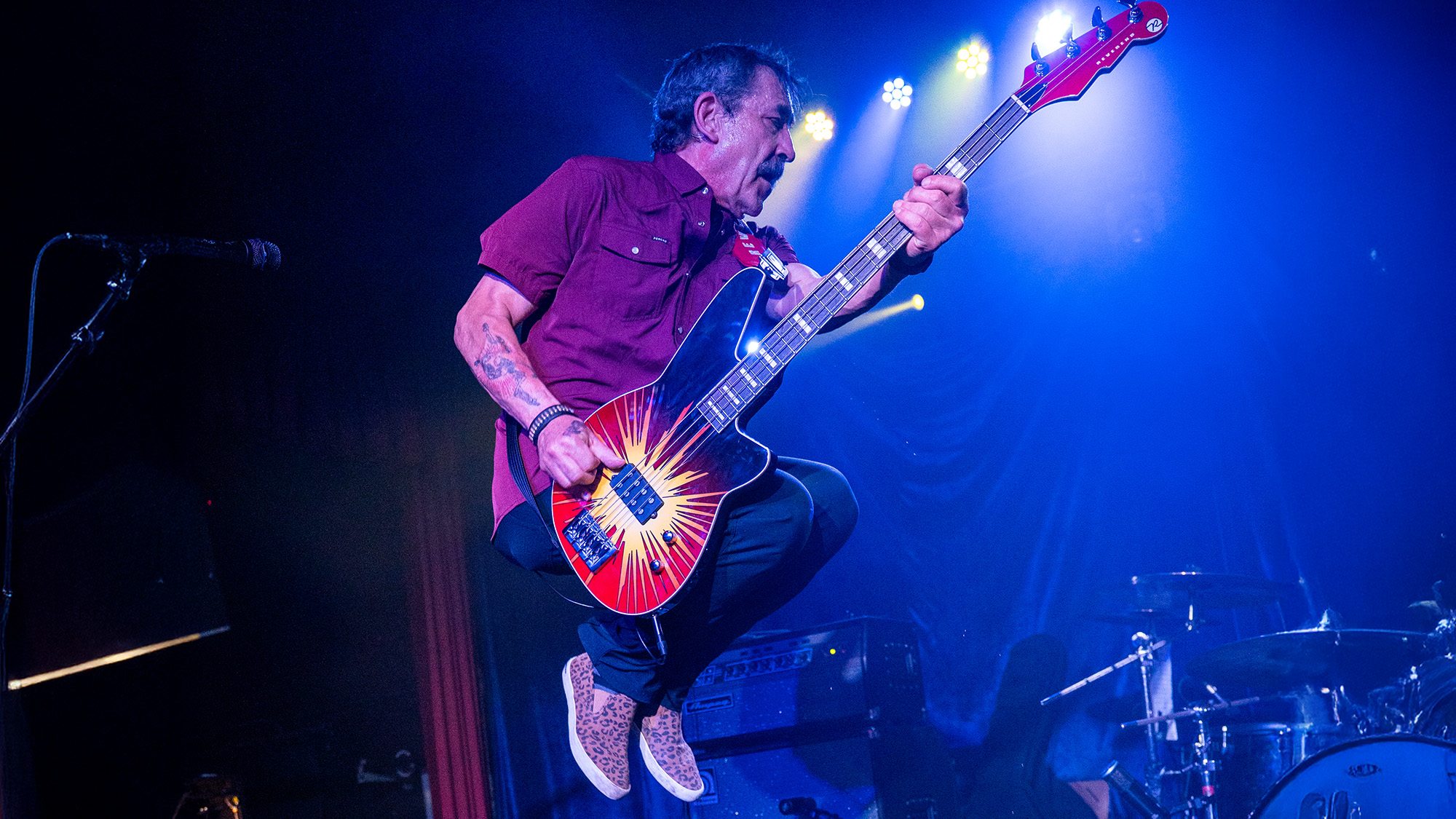How bass effects pedals have improved over the past 30 years
From the '90s onwards, effects manufacturers have spearheaded a revolution on our pedalboards by honing in on bass-focused stompboxes

Even for those of us that lived through it, it can be difficult to remember what being a musician was like when Bass Player magazine first appeared on the scene.
1990 feels not so much like a different era as a different planet – and, up until that point, interstellar sonic exploration among bassists was a relatively rare event. Certain pedals were already firmly within the bassist’s consciousness by that point, of course.
Pino Palladino and Guy Pratt had made the sound of the octaver recognizable the world over, and Bootsy Collins’ fuzzed-out, envelope-filtered, and delay-drenched sound was an integral part of the history and development of funk, but the 90s saw a rapid expansion in the world of bass pedals and effects.
Whether the birth of BP had an influence on this or not is a matter of conjecture, but I’m inclined to think the bass pedal explosion at the start of the decade was definitely aided – if not entirely motivated – by this glorious new space for celebrating the bass as something other than a guitar for the unambitious.
At the tail-end of the '80s, Boss started introducing a slew of bass-focused pedals
At the tail-end of the '80s, Boss started introducing a slew of bass-focused pedals, many of which used the then-novel trick of leaving the low end untouched so that whatever swirly effect was being added didn’t suck all the life out of the essential bass tone.

This specialism was carried over into the arrival of the first multi-effects units for bass; the 90s were just a couple of years old when Boss introduced the ME6-B, and their main rival Korg brought out the A4 Bass.
The A4 was my first multi-FX, and despite its obvious limitations from a 2020 vantage point, it opened up a whole new world of sound processing as an essential ingredient in my journey as a bassist.
All the latest guitar news, interviews, lessons, reviews, deals and more, direct to your inbox!
Anyone who bought BP in those early days will remember the advert for the ADA MB1 MIDI programmable preamp on the back page – its photoshoot is where Victor Wooten first met Steve Bailey.
Rackmount gear targeted at bassists was thin on the ground compared to our thin-stringed cousins, but ART blessed us with the outrageous (bright pink!) Nightbass SGX, an introduction to a whole other level of sound processing quality.
At the opposite end of the spectrum, Zoom completely changed the game with their super-budget – but surprisingly cool-sounding – 506 Bass pedal, which was small enough to fit in your pocket, and cheap enough for casually interested effects-dabblers.
Two companies emerged on a global stage to transform the world of bass sounds – Line 6 with the launch of the original Bass Pod, and Roland with their extraordinary V-Bass system
That little pedal introduced many a fledgling sonic wizard to the possibilities of chorus, delay and reverb... along with a fair amount of background hiss! The next great innovation happened at the turn of the millennium.

After many attempts at making a MIDI bass, a new technology emerged that offered near-limitless sonic experimentation without any of the latency and triggering problems associated with MIDI.
Modeling employed extensive DSP (digital sound processing) to emulate different sounds, often taking into consideration the characteristics of the input signal too.
Three companies emerged on the global stage to transform the world of bass sounds – Tech 21 with Andrew Barta's revolutionary SansAmp tube amplifier emulator, Line 6 with the launch of the original Bass Pod, and Roland with its extraordinary V-Bass system.
While Line 6 focused on emulating classic amp sounds, Roland offered all manner of space-age wackiness to any bassist brave enough to jump off that ledge. Meanwhile, the SansAmp became the tone-shaping module of choice for a generation of bass players.
Around the same time, another technology was beginning to change the fortunes of people building stompboxes. The internet offered unparalleled access to parts, as well as direct sales opportunities, to independent pedal builders. Over the next 20 years, the sonic possibilities of the bass guitar have been expanded beyond anyone’s reckoning.
As the cost of computer processors has dropped, and their speed and power has grown exponentially, the parallel growth in digital processing and pedals has changed the face of pop music.
While international brands such as MXR, TC Electronic, Darkglass, Aguilar, and Electro-Harmonix continue to serve up bass-specific pedals galore, the amazing increase in sound quality across the board has offered the opportunity to use pretty much any pedal, whether or not it was targeted at us thick-stringed warriors.

The early problem of avoiding guitar effects because they sucked out all the low end has all but disappeared, as processing power exploded and components in analog pedals became better engineered.
Indie pedal builders like EarthQuaker, Catalinbread, Fuzzrocious, ZVex, Wampler and a huge line-up of others made pedals that could process literally anything – and make your bass sound unlike any instrument previously imagined.
As we enter the third decade of this millennium, the pedal market is bursting at the seams with innovation and choice, and the world of DSP has brought the mega-racks of the 80s and 90s into a pedal-sized format.
Companies like MOD Devices, Two Notes Audio and the ever-pioneering Line 6 continue to push at the limits of what computers have made possible, as we leave the days of thin, digital sounds to history and explore a new frontier. And trust us, whenever there’s a Next Big Thing on the horizon, BP will be your guide.
